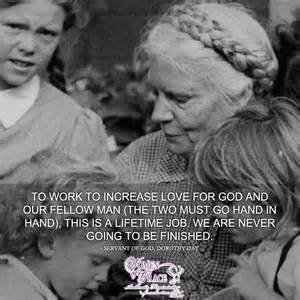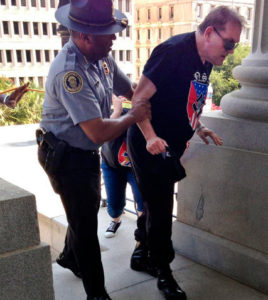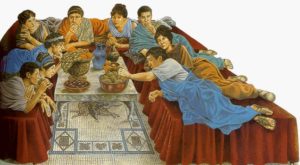 I found a quick calculator that helped me to estimate my household’s carbon footprint. Ours is about 12 tons per year. Want to know yours? Check out this LINK
I found a quick calculator that helped me to estimate my household’s carbon footprint. Ours is about 12 tons per year. Want to know yours? Check out this LINK
Twelve tons seemed like a lot to me. It takes about 63 trees to offset that much. In the fall, we have so many leaves to rake that it FEELS like we have 63 trees on our little suburban lot. But we don’t. So, I researched the top ways to reduce your footprint…
1. Cut down on air travel. One round-trip flight between New York and San Francisco creates a warming effect equivalent to 2-3 tons of CO2 per person.
2. Walk or ride public transportation as much as you can. Even if you drive a small car, and only drive 500 miles per month, your car is spewing about 1.7 tons of CO2 annually.
3. Eat a vegetarian diet.
4. Have fewer children.
Too late for that last one!
I admit I love to travel and will not be reducing my carbon footprint that way any time soon. I already drive a fuel-efficient car and take public transportation to work. But, I’m really worried about climate change and, in the spirit of my ‘be the change’ theme, rather than complaining about Trump pulling out of the Paris accord, I decided to try eating less meat.
My daughter and son-in-law have been vegetarians for years, so I know first-hand how do-able it is. And I’ve never been someone who has to eat at lot of meat at every meal. But, I do enjoy meat, so I just didn’t think I could go vegetarian, much less vegan. I decided to try reducing my meat consumption by about 70%. I’ve been on this flexitarian diet for a week now, and I’m not finding it hard at all. And I lost a pound! But, better yet, I’m reducing our carbon footprint by almost a ton per year. I’d encourage almost anyone to try this. I’ll publish my menus weekly for the next several weeks, and can provide recipes for starred items on request.
Here’s a link to this week’s menus:
Vegetarian Experiment Week One

 Well, an
Well, an Al and I got a rain barrel this week. For $85, we got the barrel, the spigot, instructions and a very informative lecture – not just on how to use the rain barrel, but about the threats to safe drinking water in Pennsylvania and what we all can do to protect our water resources.
Al and I got a rain barrel this week. For $85, we got the barrel, the spigot, instructions and a very informative lecture – not just on how to use the rain barrel, but about the threats to safe drinking water in Pennsylvania and what we all can do to protect our water resources. When she was in her 20s, Dorothy Day would have seemed like a long-shot for sainthood. She lived a bohemian lifestyle including multiple lovers, an abortion and a child born outside of marriage – and this was in the 1920s, when society didn’t exactly shrug at that as we do today. She was, at various times, either an Anarchist or a Socialist.
When she was in her 20s, Dorothy Day would have seemed like a long-shot for sainthood. She lived a bohemian lifestyle including multiple lovers, an abortion and a child born outside of marriage – and this was in the 1920s, when society didn’t exactly shrug at that as we do today. She was, at various times, either an Anarchist or a Socialist.

 We spend more time at work than most us do with our families. For many of us, co-workers are a family away from home – and sometimes they can get on our nerves or hurt our feelings just like family members. It can be hard to be kind. It’s so easy to form cliques, or hold onto grudges and resentments. This week, following a nice, relaxing long holiday weekend, I challenge you to break out of the mold and practice at least one random act of kindness at work.
We spend more time at work than most us do with our families. For many of us, co-workers are a family away from home – and sometimes they can get on our nerves or hurt our feelings just like family members. It can be hard to be kind. It’s so easy to form cliques, or hold onto grudges and resentments. This week, following a nice, relaxing long holiday weekend, I challenge you to break out of the mold and practice at least one random act of kindness at work. We’re going back in time this week, to 19th-century Pittsburgh. If you’re a Pittsburgher, the name Swisshelm will ring a bell with you. That’s right: the namesake of Swisshelm Park and Swissvale Borough.
We’re going back in time this week, to 19th-century Pittsburgh. If you’re a Pittsburgher, the name Swisshelm will ring a bell with you. That’s right: the namesake of Swisshelm Park and Swissvale Borough. This is Sadie. She’s the granddaughter of my cousin Carol. Sadie takes ballet lessons, plays the cello and was voted Most Respectful Student last year. She also has cystic fibrosis. Like many people with a family member who has a chronic illness, Carol has become involved in raising awareness about CF and raising money for a cure. Carol is a board member of the Western PA Cystic Fibrosis Foundation, and she and Sadie’s many other supporters have formed Sadie’s Soldiers, which stages and participates in fund-raising events. Check out Sadie’s recent newsletter
This is Sadie. She’s the granddaughter of my cousin Carol. Sadie takes ballet lessons, plays the cello and was voted Most Respectful Student last year. She also has cystic fibrosis. Like many people with a family member who has a chronic illness, Carol has become involved in raising awareness about CF and raising money for a cure. Carol is a board member of the Western PA Cystic Fibrosis Foundation, and she and Sadie’s many other supporters have formed Sadie’s Soldiers, which stages and participates in fund-raising events. Check out Sadie’s recent newsletter  I’ve written before about how much the people of the Ancient World were like us. One of my more surprising discoveries, in researching
I’ve written before about how much the people of the Ancient World were like us. One of my more surprising discoveries, in researching